Sigma was born in 2014, as an association between engineers Evandro Flesh and Pedro Fetter, former students of UFRGS (Universidade Federal do Rio Grande do Sul – Federal University of Rio Grande do Sul), where both were “founders” of the local Formula SAE team.
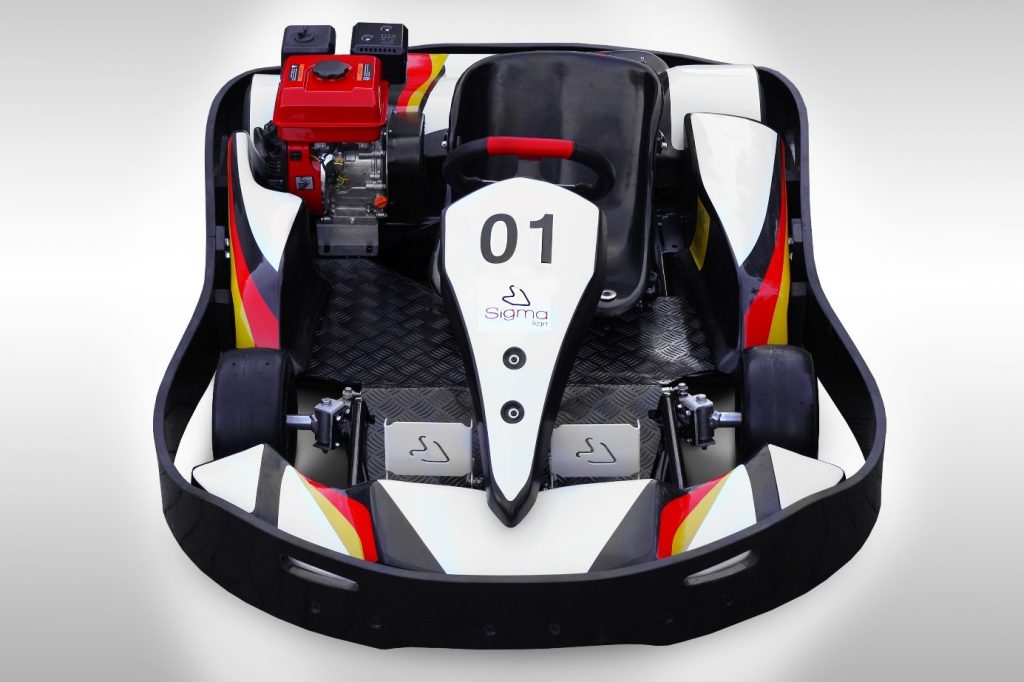
The partnership between the two engineers started with the manufacturing of spare parts and go-kart chassis, however the seed was there to build a Brazilian sport-prototype, specially as at the time the duo worked under guidance of Jorge Marinewski, race engineer from Motorpower, which then was responsible to run the Metalmoro MRX prototype of Felipe Bertuol, then racing at the Endurance RS (Rio Grande Sul series that would become the foundation for the Brazilian Endurance Championship).
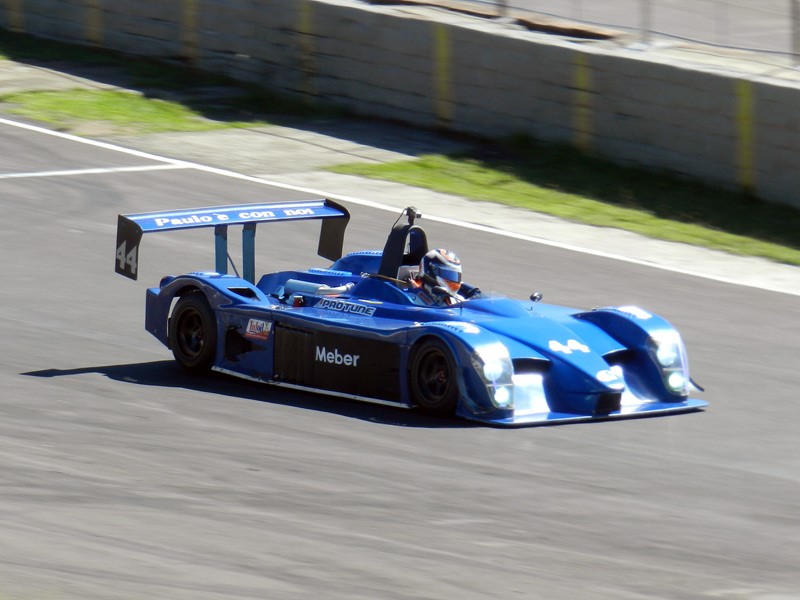
With the renaissance of Endurance racing in Brazil, some well funded teams turned to FIA GT3 cars, built by brands like Ferrari, Porsche and Lamborghini, among others. These are very powerful and reliable cars, and even being heavier were a lot faster than most Brazilian built prototypes, then mainly formed by the Metalmoro MRX, small cars with 2-liter NA engines and Hewland FTR200 transaxles, originally built for F3 cars. Even though they were light and nimble, these cars were not fast enough to keep up with the GTs, so to improve the pace of the cars many teams have chosen to use turbocharged engines, which in turn brought along a lot of new problems, as the higher torque meant the small transaxles ended up being destroyed. Even worse, imported transaxles with capacity to handle higher amounts of torque, like those from Brazilian Stock Cars, were way more expensive, to the point of costing as much as half the price of the car, turning this option really not viable.
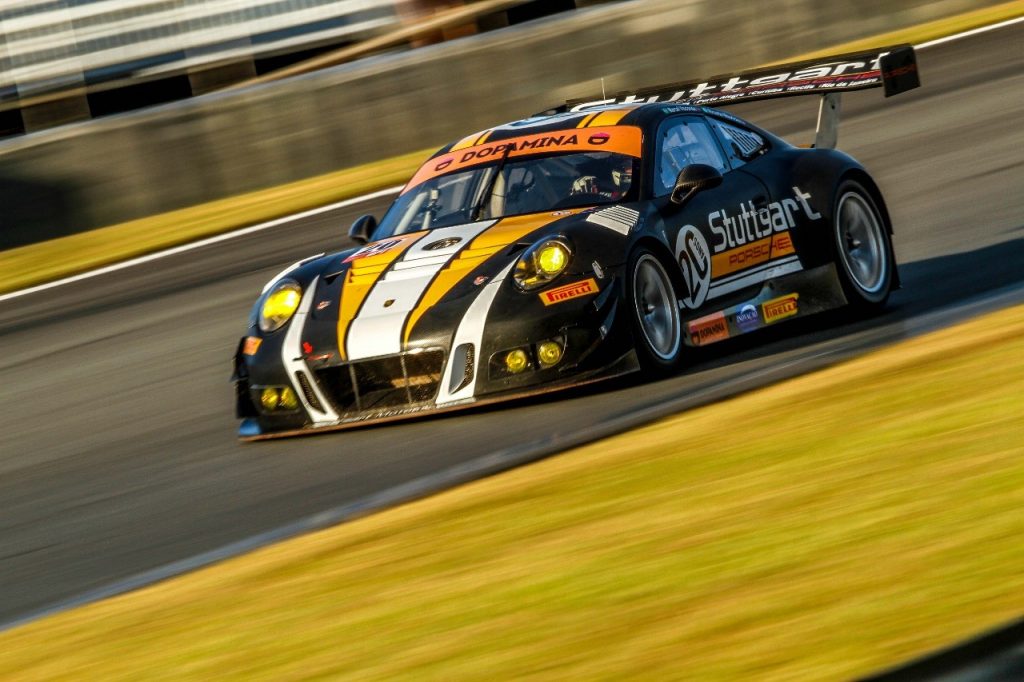
In this environment, the idea of a transmission-less prototype grew in the minds of Evandro Flesch, inspired in a way by Formula 1. Many will remember the 1993 Brazilian Grand Prix, when Ayrton Senna won completing the last laps only with the sixth gear, however the engineers point out another genius as inspiration, in this case the epic drive from Michael Schumacher in the 1994 Spain GP, when he scored an heroic second place finish after getting stuck in fifth gear right at the beginning of the race. This was one of the greatest ever shows of the seven time world champion, when he managed to exit the improvised chicanes with the engine almost stalling (remember that Spain was the second race after the tragic race in San Marino) and hitting the rev limiter half way through the straights.
From this background came the idea: why not get rid of the transmission (and all the cost, weight and complexity), and develop an engine to run only in “fifth gear”? This project was presented to many drivers, until Felipe Bertoul, together with Jindra Kraucher closed the deal to build the first car.
Part 1 – Chassis
Deal closed, the project phase was started, with a team of four people: joining Evandro Flesh and Pedro Fetter came engineers Felipe Lorenzi and Flávio Duarte, also UFRGS graduates.
The chassis is a conventional tubeframe, with dimensions taken from the LMP1 rulebook, but taking advantage of the virtually open Brazilian P1 rulebook. Suspension is a double-A arm actuated by push-rods and rockers, with Penske shocks, antiroll bar and third element.
Bodywork (which will be addressed later on in this article), employs a combination of glass and carbon fiber, resulting in a weight of 940 kg (2019 spec), with a good power/weight ratio of 0,58 HP/kg.
Part 2 – Powertrain
To eliminate the need of a transmission with various gear ratios, the Sigma P1 was conceived with a hybrid powertrain, by combining an Audi ABZ 4.2 liter V8 to a Borgwarner EFR turbocharger. To work without a transmission, the calibration was set so the turbocharger would spool at low rpms, releasing the waste gate as engine speed increases. In this configuration, max power was a flat line of nearly 500 HP between 3.700 and 6.500 rpm, transferred to the rear differential through a sized clutch and a pilot shaft. An electric motor was used to move the car from inertia, in a system that reminds, in concept, Koenigsegg Regera’s KDD system (even if in a different implementation).
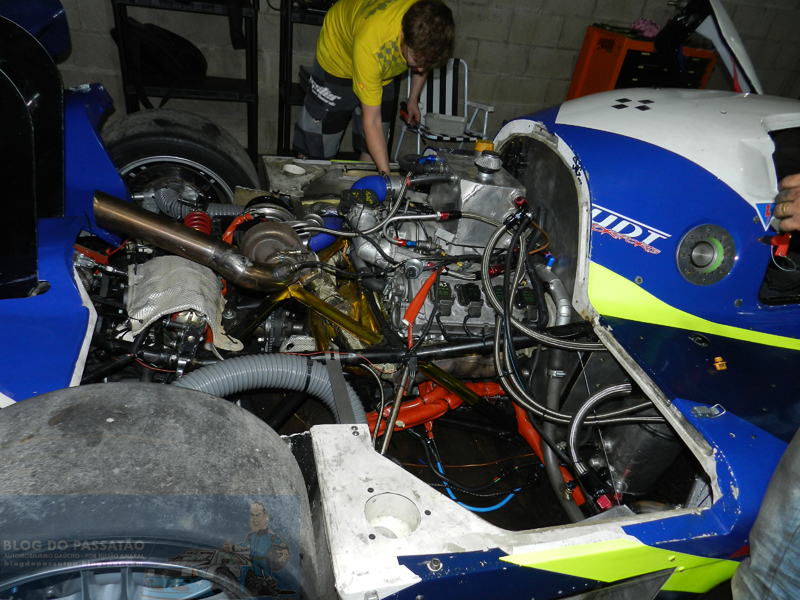
Training at Tarumã (Rio Grande do Sul older race track, and a proving ground for prototypes built at that state), the Sigma managed lap times around 1m02s, however the “transmission-less” concept ended up being scrapped in favor of a Xtrac 6 speed transaxle, similar to those employed in LMP3 prototypes, with the team’s resources being focused on chassis development. In the words of Pedro Fetter:
“Achieve these numbers and reasonable lap times was relatively easy, however bring durability to the system would give a lot more work. We had issues keeping water and oil pressure at adequate levels, as maximum effort was at low revs and both pumps were mechanical. The flexible coupling between the clutch and differential lasted only a few runs. When we reinforced the coupling, the clutch started to suffer. We ended up finding one “non-conventional” issue after the other, and the point arrived were we had to face a decision of either go back and use a conventional transaxle, or invest even more money to solve all the problems. As the budget was limited, and at this time the new LMP3-spec transaxle were launched, we chose shelve the direct transmission project.”
Currently the calibration parameters of the Fueltech FT600 have been updated to fully use the Xtrac 1152 transaxle, with a maximum power output of circa 550 HP.
Part 3 – Aerodynamics
Since the beginning, all the aerodynamic work on the Sigma was done in CFD, using a proprietary dedicated server. For 2019, the team updated the aero to close the gap to the front runners, with the main updates in the front and rear wings, the last one with a variable profile and in fully built in carbon fiber.
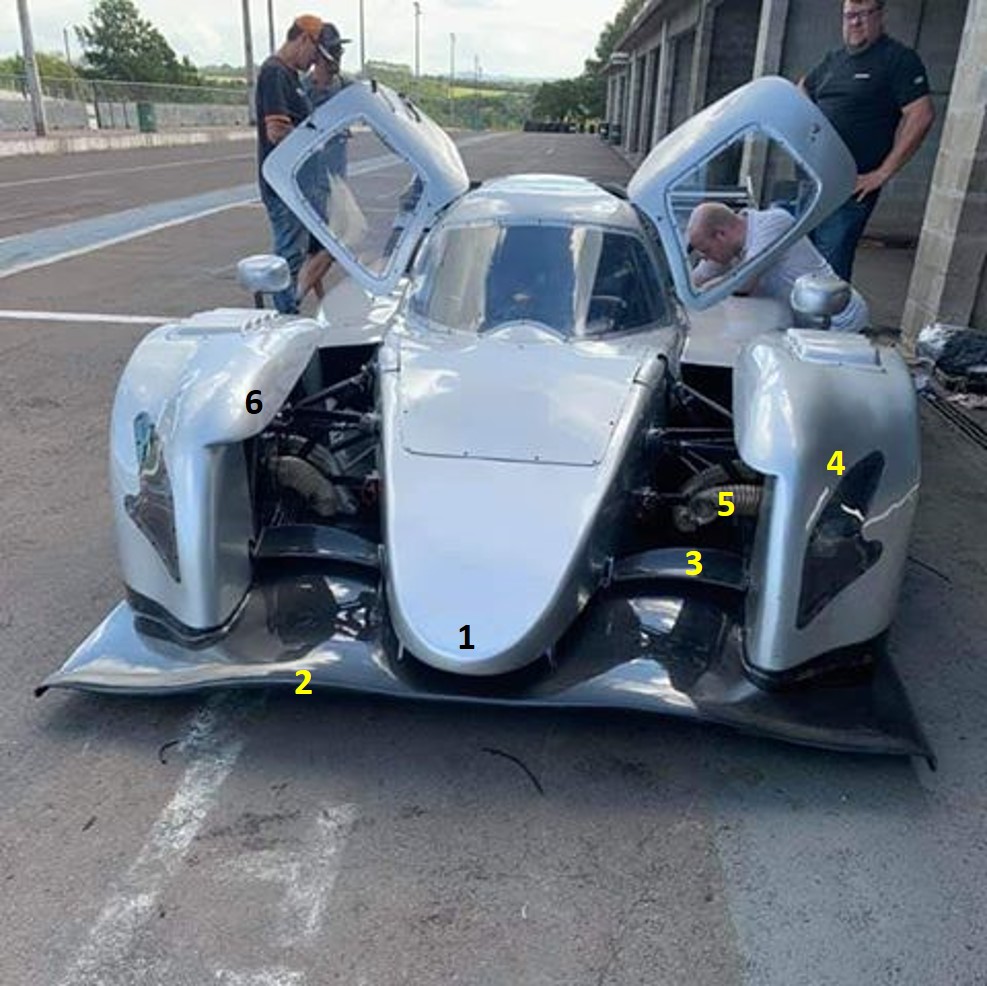
Looked from the front, the Sigma bears close resemblance to the Le Mans prototypes, but as the Metalmoro AJR, takes advantage of the lack of technical regulations limiting the design in the Brazilian P1 class to position the driver in the center of the cockpit, with a raised nose (1) and a new front wing, that has an elevation in the central portion (2) to increase airflow to the underfloor. This wing is a dual element design, with an adjustable second element (3) to fine tune the aero balance. The front fender (4) also are reminiscent of a LMP1, and in 2019 received a new set of headlights in the form of a stylized Sigma logo. The brake cooling ducts don’t have any sort of aero work, consisting of exposed tubes (5), a common solution in Brazilian prototypes. Another curiosity are the front fender “prolongations” over the front wheels (6), for which I could not define a function until now.
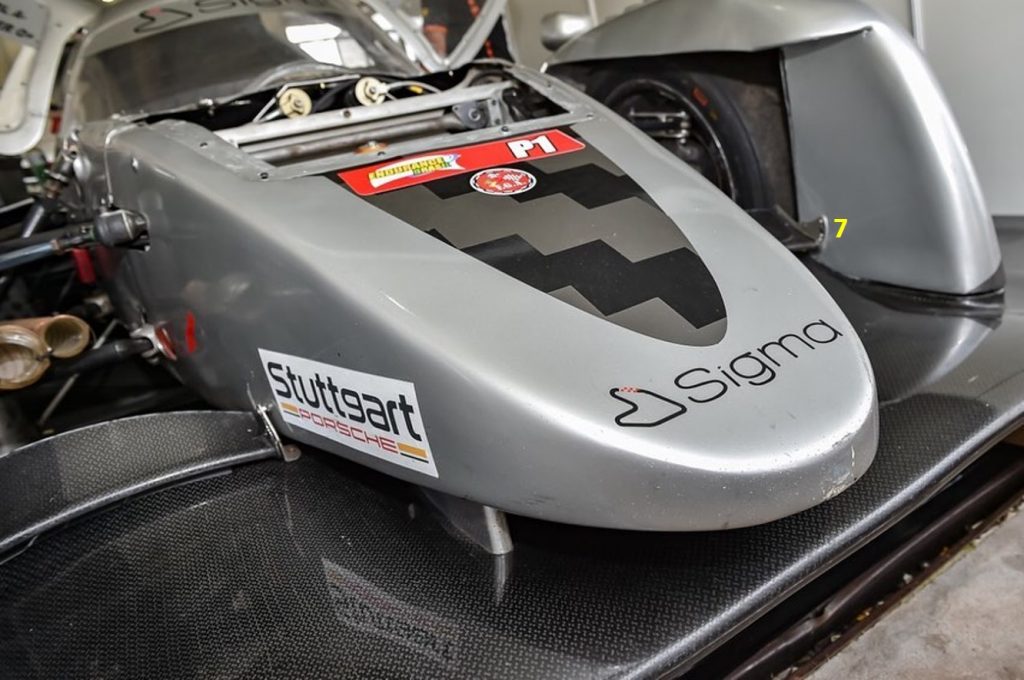

The cooling system was also revised for the 2019 upgrade, with radiators 60% larger to guarantee the temperature control of the Audi V8 engine. Air intakes for the cooling system (8) are not impossible to spot on the side view, and even from the front view they are well hidden. The rear brakes receive their cooling through to openings integrated to the rear fender design (a solution very common on contemporary Le Mans prototypes). It’s interesting to notice that besides the new profile, the rear wing position is very low (10), reminding some Group C era cars.
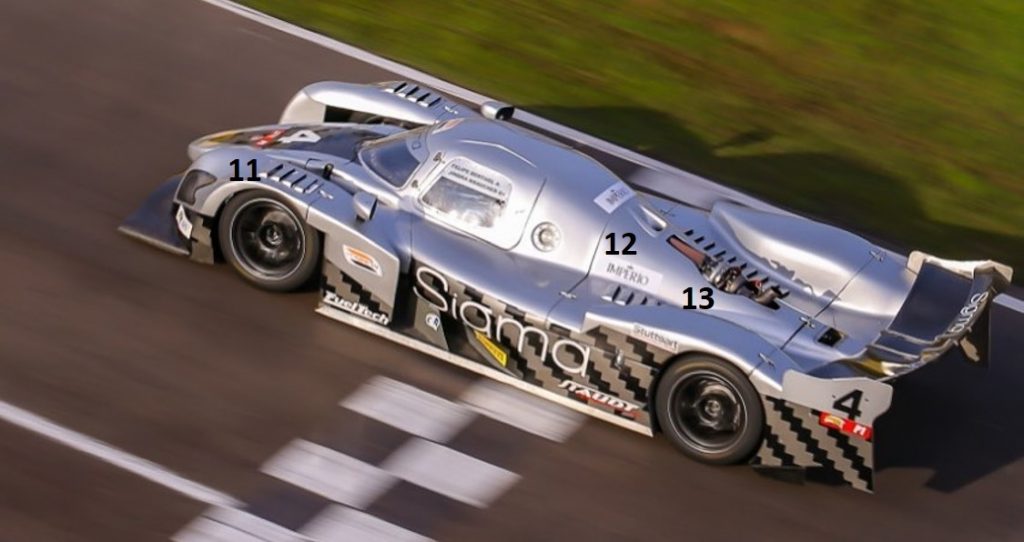
From this view we can see that only the front wheels have openings, in this case a set of louvres to help increase front downforce. Different from other prototypes, the engine air intake is not done through an air scoop, instead relying on what looks like an NACA duct (12) for the compressor intake. This leads me to think that the overall design goal was to reduced the frontal area and the overall drag, with smooth curves and reducing the use of winglets and other aero bits, focusing to generate downforce with the wings and the underfloor.
This view also highlights the bodywork cut out to accommodate the turbocharger (13), something that was not present in the 2017 spec car, with the direct drive system. We can see below that the turbocharger had to be moved from a transversal orientation to a longitudinal one, to free some space for the Xtrac transaxle.
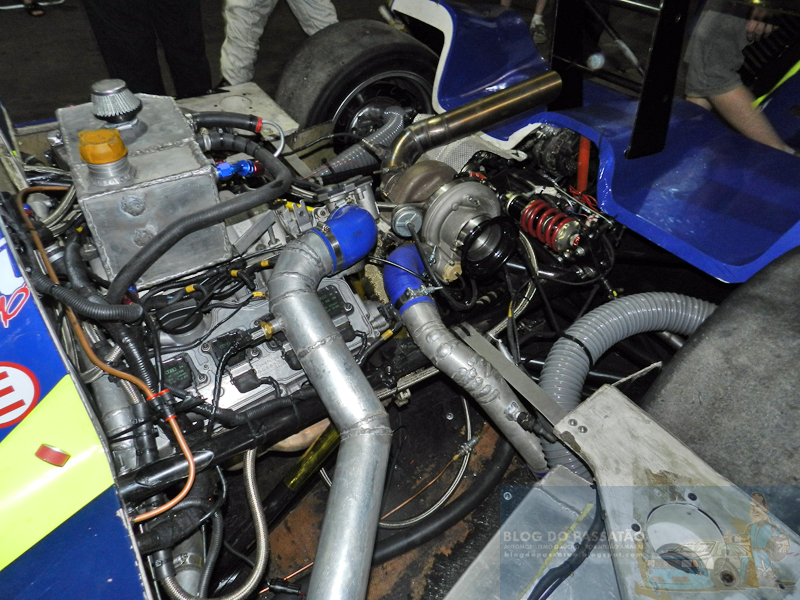
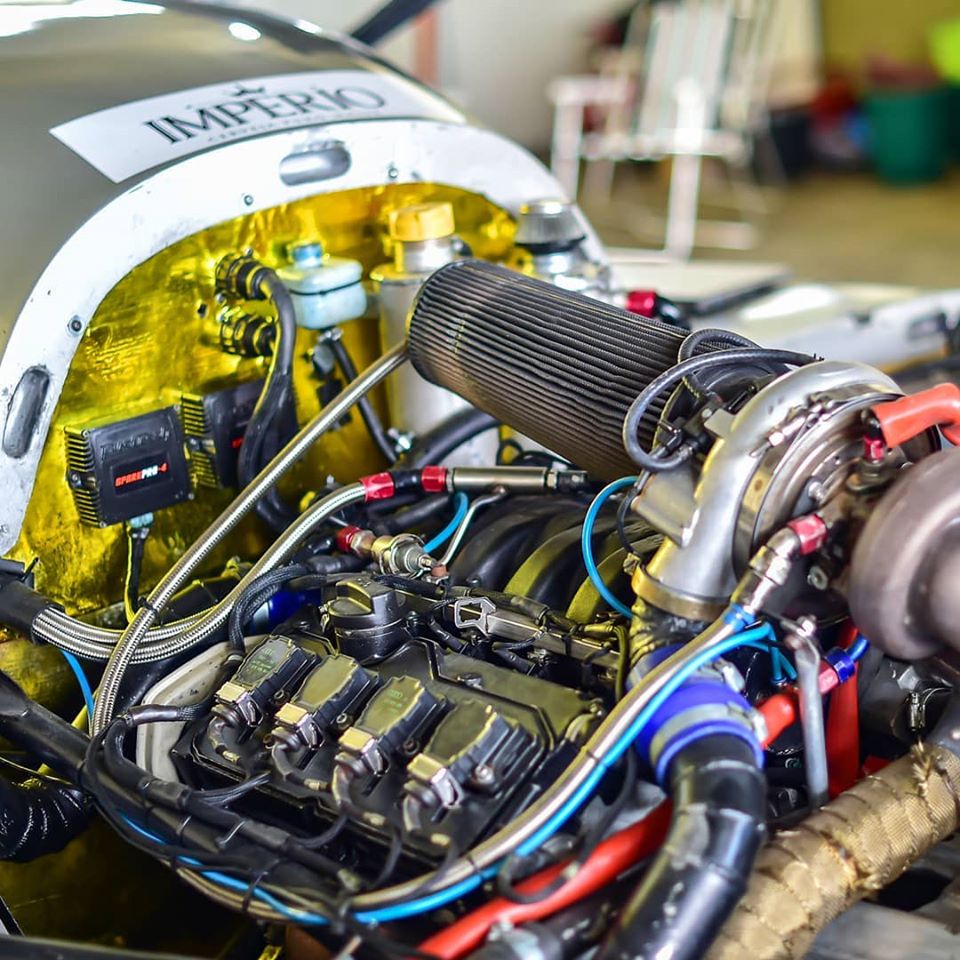
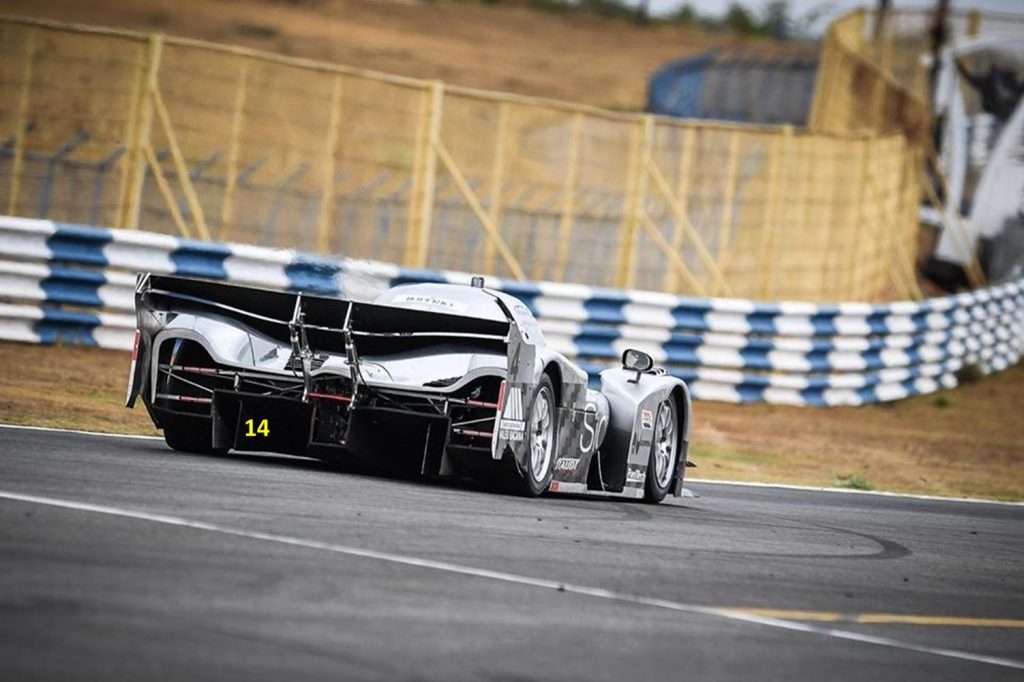
In this view we can see the large rear diffuser (14). Initially the rear wing was a conventional single profile dua element, held in place by two swan neck mounts and placed in a higher position (see image below).
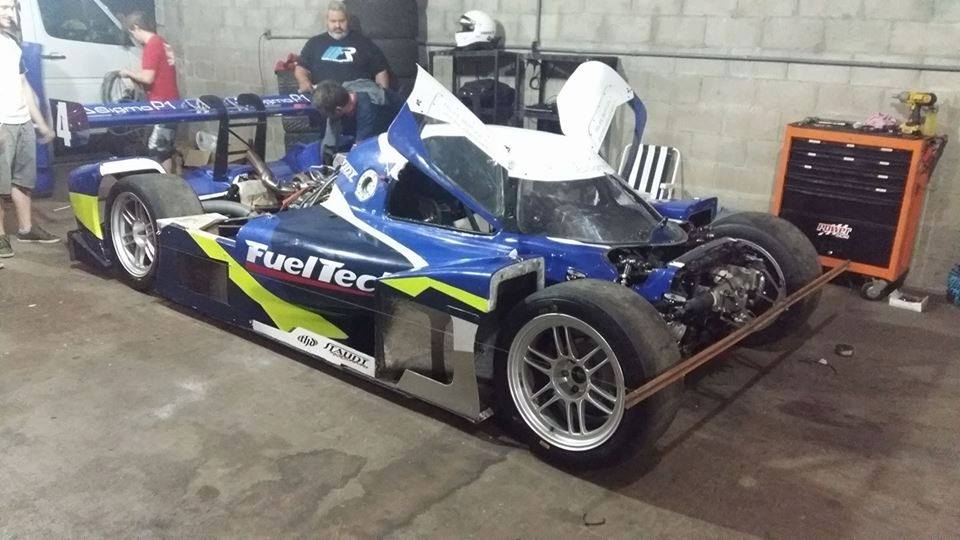
From 2019 onwards, the rear wing was updated, and is for sure the most complex among the 2019 Endurance Brasil competitors, with two elements and a variable profile. The lower element has a very long chord, and the wing is held by four mounts: two strong aluminum mounts in the center and two large endplates. Besides that, it is placed in a low and rearward position, hinting that this wing has the function to help with the extraction of the diffuser, increasing the overall downforce.
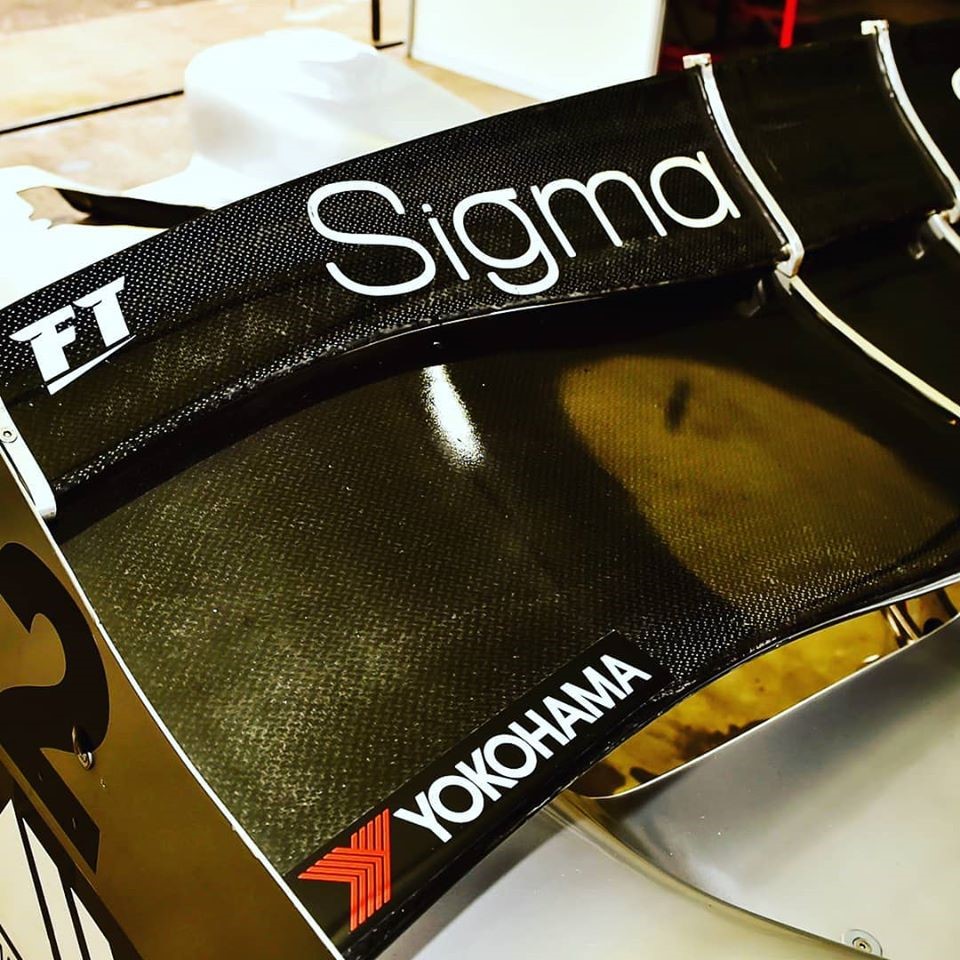
During 2019 the Sigma received a lot of updates, starting with fifth round, the 4 Hours of Interlagos, when dive planes were added to the front fenders and a supplementary LED headlights system was added (this was a partially night time race). Differing from other prototypes that simply stuck some sort of LED illumination in the nose cone, the Sigma team managed to nicely integrated this additional lights system to the nose design.
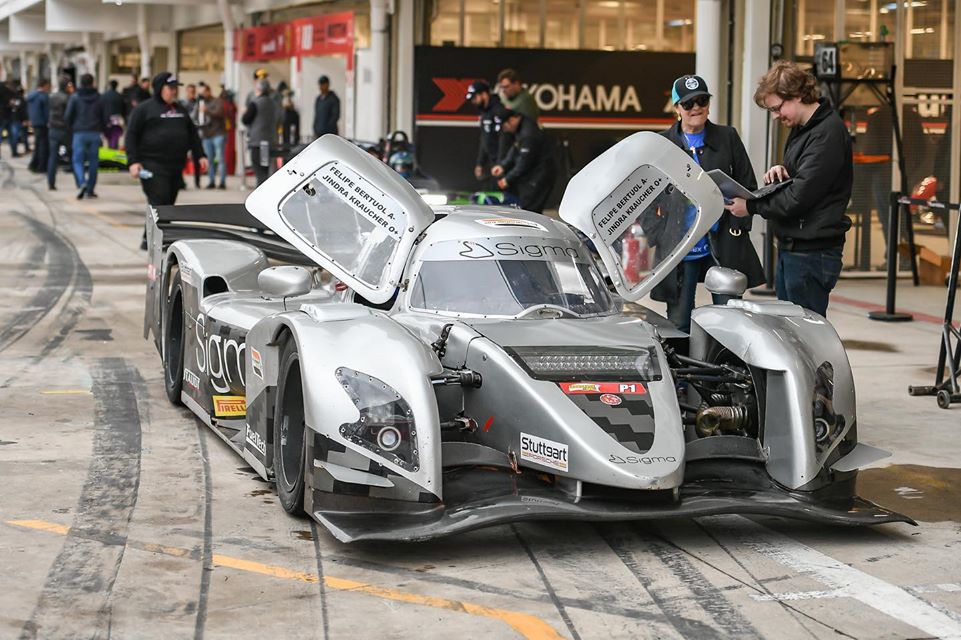
The next race, the 3 Hours of Goiânia saw the introduction of a DRS system, following the lead from the Metalmoro JLM AJR. According to Sigma, after activated the DRS reduces drag by 20%, becoming a valuable tool during overtakes and to handle traffic from slower cars.
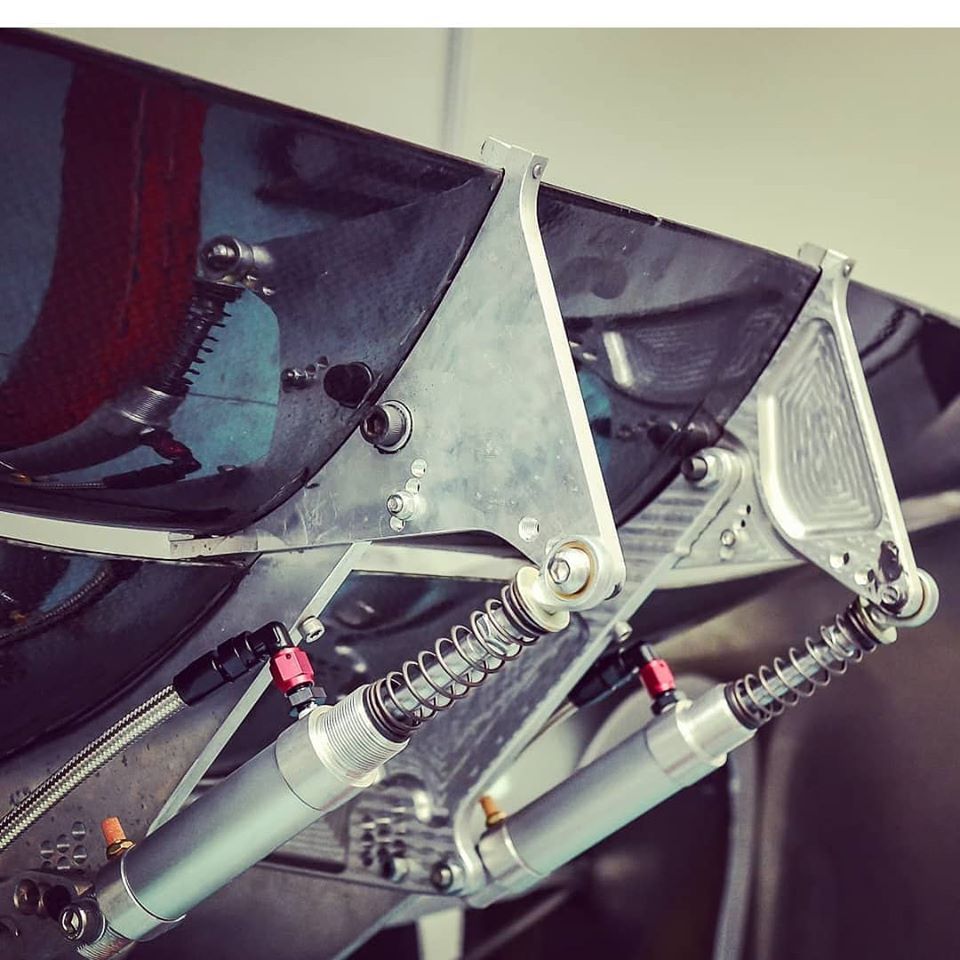
In the video below, from Curva do S channel, we can see an on board lap around Goiânia and the deployment of the Sigma P1 DRS.
Competititon History
The Sigma P1 debut at the 2017 12 Hours of Tarumã, driven by Felipe Bertuol and Jindra Kraucher. Still with the hybrid system, the car managed to complete 69 laps, in what can be considered an “deluxe” test session. After that the car continued to be developed, aiming to participate in the 2018 season of the Endurance Brasil Championship. The debut at the Championshi, this time with the Xtrac transmission happened at the 3 Hours of Santa Cruz do Sul, fifth round of the 2018 championship, with a time of 1,20s977, enough for a 13th spot on the qualifying table. Even being unable to keep up with the front runners in the qualy, during the race the performance was way better, and the duo managed to score a 6th place among the P1 prototypes.
For 2019, Sigma joined the championship at the second round, the 4 Hours of Goiânia, scoring a seventh place in the qualy, still some seconds off the fastest cars. During the race the pace improved relatively to the other P1 and GT3 cars, in a race that proved to be particularly hard on the prototypes, and where they managed to be the third P1 car with more laps completed, albeit with not enough laps to be classified. Returning to Santa Cruz do Sul, the qualifying lap time improved in 2 seconds compared to 2018, in a track where none of the other competitors managed to improve their lap times significantly compared to the year prior.
From the Interlagos round onwards, the Sigma team changed focus, registering the car for the P2 class (the P2 class in the Endurance Brasil is a grandfathering class for old cars built according to the P1 rulebook prior to 2019). This was done since the team realized that, to keep up with the pace setting AJRs they would have to make a heavy investment in improvements like carbon-carbon brakes, single nut wheels (the Sigma was built with conventional five spoke wheels). Competing in P2, the drivers Jindra Kraucher, Felipe Bertuol (Interlagos only) and Aldo Piedade Jr (reminding races) started to be the pace setters, scoring 3 class poles in 4 races (only missing the last round where they were not able to run the qualy sessions), with tow second place finishes and two class wins, securing a runner-up spot for Jindra Kraucher in the P2 class.
More than that, it is worth to highlight the excellent performance of the car at the season finale, in Curitiba, where, still running in the P2 class, the team ran with a more aggressive engine mapping and managed to bring the fight during the race to the AJR prototypes, finishing in the 7th place as the best placed prototype, ahead of the Ginetta G57 and the squad of AJRs.
Sources:
Sigma Kart. Available at: http://www.sigmakart.com.br/index.html.
Sigma P1 Engenharia. Available at : https://www.facebook.com/sigmap1/.
Sigma P1 fez sua estréia oficial nas 12 Horas de Tarumã! Conheça a barata. Available at : http://www.blogdopassatao.com/2017/12/sigma-p1-fez-sua-estreia-oficial-nas-12.html.
Images:
[1]: Sourced from: Sigma Kart. Available at : http://www.sigmakart.com.br/index.html.
[2]: Sourced from: Piloto gaúcho Felipe Bertuol participará do Brasileiro de Endurance a bordo do MRX #80. Available at: http://www.blogdopassatao.com/2013/07/piloto-gaucho-felipe-bertuol.html.
[3]: Sourced from: Galeria de Imagens. Available at: http://www.imperioendurancebrasil.com/imagens.html.
[4]: Sourced from: Sigma P1 fez sua estréia oficial nas 12 Horas de Tarumã! Conheça a barata. Available at: http://www.blogdopassatao.com/2017/12/sigma-p1-fez-sua-estreia-oficial-nas-12.html.
[6]: Sourced from: Sigma P1 Engenharia. Available at: https://www.facebook.com/sigmap1/.
Acknowledgement:
I’d like to specially thank engineer Pedro Fetter and Sigma P1 Engenharia by the availabilty to my contact and the information shared, that certainly enriched the contents of this post.

